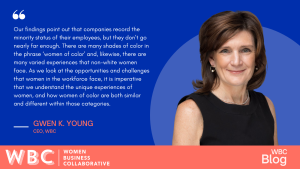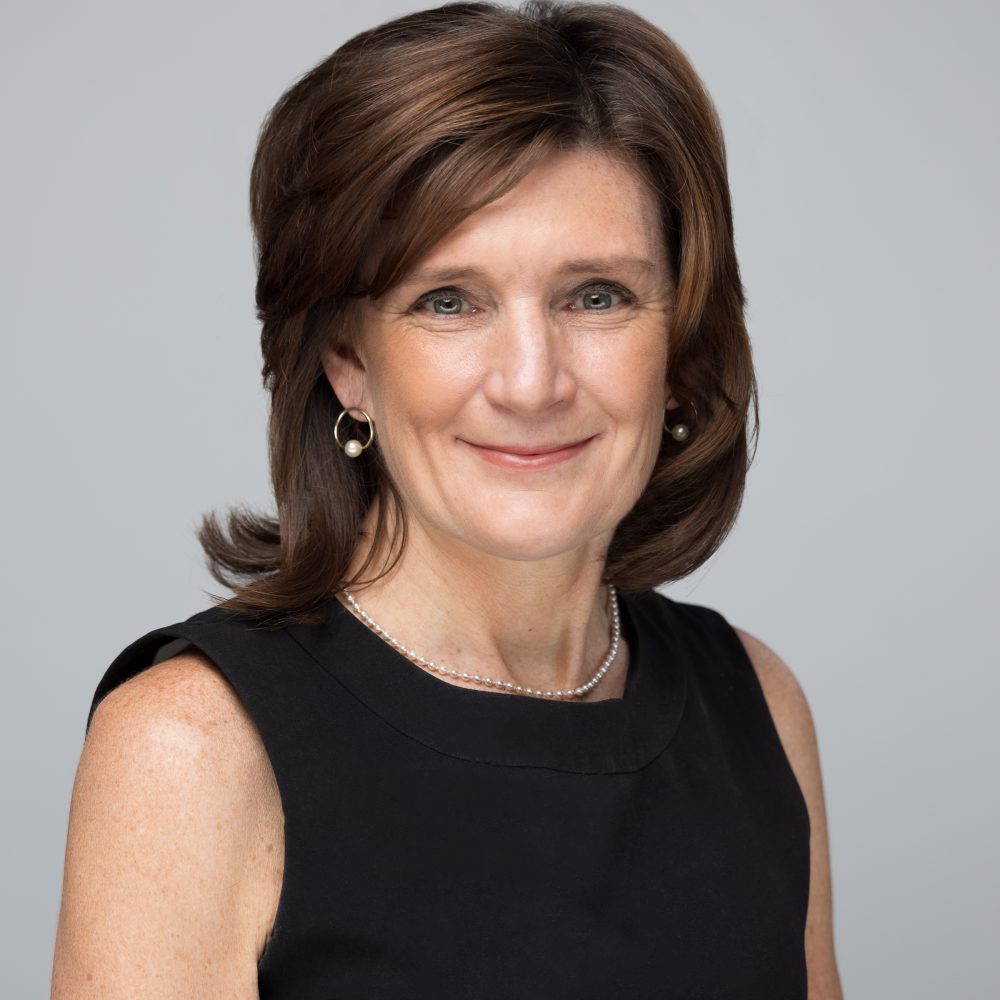
This month, Women Business Collaborative is focusing on intersectionality and how it informs the experiences of women of color in the workforce. We know that all women face barriers to advancement. What the data also shows us is that women of color experience unique challenges and discrimination that differ from the experiences faced by white women or men of color. Intersectionality acknowledges the interconnected nature of these identities. Recognizing the importance of intersectionality helps companies focus on the complexities they need to address as they strive to build a successful workforce, one that drives shareholder and stakeholder value.
Intersectionality, as it relates to the diverse experiences of women of color, is crucial for companies to understand and address. To shed more light on the issues, Women Business Collaborative reviewed over 60 reports from academics and key partners, including Seramount, Latin Insights, and companies like McKinsey, to better understand what we know about the different groups of women under the women of color umbrella. To view the summary and download the Women of Color Briefing, click here. The aim: To build the most engaged, productive, and profitable workforce in any industry.
Our findings point out that companies record the minority status of their employees, but they don’t go nearly far enough. There are many shades of color in the phrase ‘women of color’ and, likewise, there are many varied experiences that non-white women face. As we look at the opportunities and challenges that women in the workforce face, it is imperative that we understand the unique experiences of women, and how women of color are both similar and different within those categories. It’s time to take a closer look at gender and race, and the intersection of those experiences in order to build a positive environment in which all women can contribute and thrive.
When we take a look at the importance of intersectionality, several main points become clear:
- Complex Identities: Women of color experience unique challenges and discrimination that differ from those faced by white women or men of color. Intersectionality acknowledges the interconnected nature of these identities.
- Inclusive Policies: By understanding intersectionality, companies can create policies and initiatives that address the specific needs of women of color, ensuring a more inclusive workplace.
- Improved Work Environment: Recognizing and valuing the diversity within women of color can lead to a more supportive and equitable work environment, improving morale and retention.
- Innovation and Perspectives: Diverse perspectives lead to innovation. Women of color bring unique viewpoints and solutions that can drive creativity and problem-solving within teams.
- Equity in Advancement: Ensuring that women of color have equal opportunities for leadership and career advancement can help close gender and racial gaps in senior positions.
Companies who want to build a successful workforce and drive shareholder and stakeholder value should consider intersectionality and collect relevant data that reveals more about the complexities of their workforce. Data provides the hard numbers, and knowledge is power. When a company is able to harness the talents of its workforce, it is by far more likely to be competitive and successful.
So how should a company tackle the challenge of understanding its workforce more fully? Let’s start with the basics.
Collecting Data
- Identifying Gaps: Collecting data on race, ethnicity and gender helps identify gaps in representation, pay and promotion rates, allowing for targeted interventions.
- Tracking Progress: Data collection allows companies to track the effectiveness of diversity and inclusion initiatives over time.
- Understanding Experiences: Surveys and feedback mechanisms can help understand the specific experiences and challenges faced by women of color, informing more effective support strategies.
- Compliance and Accountability: Data ensures compliance with diversity goals and holds the company accountable for making measurable progress.
Collecting data is a great place to start for companies that want to invest in the well-being of their workforce. The numbers can point to trends that illustrate unconscious biases directed at women, and especially at women of color, that are reflected in the opportunities they are given, in pay raises, and in promotions. If the data shows that women are being hired at the same rate as men in entry-level positions but are lagging in promotions to managerial levels and director levels, there are good strategies that can be put in place to achieve equity for pay, position, and power. If we don’t have a robust group of women rising the corporate ladder, we will not see more women in the C-Suite and more women CEOs. Change must start at the very beginning. By incorporating intersectionality into their diversity and inclusion efforts and collecting relevant data, companies can create a more equitable and dynamic workplace for women of color.
The importance of good data cannot be stressed enough. Comprehensive data allows corporate leaders to get a full picture, and data often points to areas for improvement. Companies can get started in a number of ways.
Strategies for Collecting Data
- Voluntary Self-Identification: Encourage employees to voluntarily self-identify their race, ethnicity and gender in a confidential manner.
- Employee Surveys: Conduct regular surveys to gather insights into the experiences and perceptions of women of color in the workplace.
- Focus Groups: Organize focus groups with women of color to discuss their challenges and suggestions for improvement.
- Exit Interviews: Collect data during exit interviews to understand why women of color leave the company and identify potential areas for improvement.
- Analytics Tools: Use HR analytics tools to analyze diversity data and generate actionable insights.
Our research shows that women of color do not feel at home in the workplace. They face stress from hostile colleagues, bias, and racial assumptions and do not feel that they can bring their authentic selves to the table. This can and will change when senior leaders take the responsibility of holding everyone—at all levels of management—accountable for building a strong and diverse workforce. Innovation and creativity are born from exciting and new ideas, and there is every reason in the world to believe that we can achieve much greater diversity, and a much more vibrant workforce, if there is the will to enact change.
We know that there are concrete actions that companies can take to encourage a more diverse workforce, and it starts at the very beginning. Internships, career days, and college recruitment will help build the pipeline of strong, talented women of color who, with good allyships and mentorships, can work their way up through the managerial ranks. When minorities are no longer all alone at the table and have others who look like themselves in positions of leadership, the company culture begins to feel more welcoming and more like a place where women of color can see a path for their own careers and leadership. Broadening the workforce also helps dispel some of the biases that people hold simply from lack of exposure to and experience of different cultures. Diversity brings about new ideas in so many positive ways, and corporate leaders who fully embrace their role in building the strongest, brightest and most innovative workforce will be the ones who take an active role in setting the standards and developing a welcoming corporate culture for all employees.
I believe we can have a productive and diverse workforce, and am proud of the work that our WBC partners do to encourage the advancement of all women in the workplace. There is much to be done, but if we all do it together, we can make change happen. Come join us!




